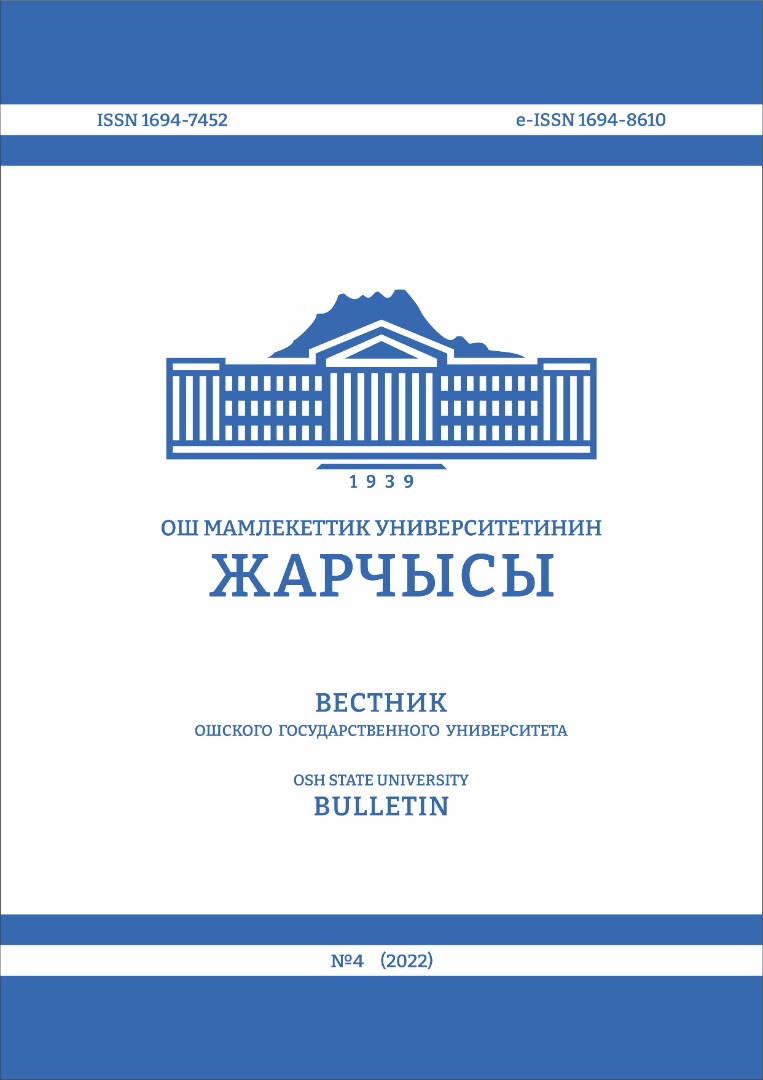INDICATORS OF THE DEVELOPMENT OF THE HAIR COVER OF HEIFERS OF DIFFERENT GENOTYPES BY SEASONS OF THE YEAR
DOI:
https://doi.org/10.52754/16947452_2022_4_70Keywords:
cattle breeding, heifers, black-and-white breed, crossbreeds with holsteins, hairline, indicators of its developmentAbstract
The article presents the results of studying the influence of the season of the year and the genotype of heifers on the weight, length, density, structure of the hair cover and the diameter of its individual structural elements. The object of the study were purebred heifers of the black-mottled breed of the Ural type (group I) and its crossbreeds of the first generation with holsteins ½ holstein × ½ black-mottled (group II) and the second generation ¾ holstein × ¼ black-mottled (group III). The relevance of studying this issue is due to the fact that the hair covering, performing a heat-protective function, plays an essential role in the adaptation of animals to the effects of adverse environmental conditions. The conducted studies of the development of the hair cover of heifers of different genotypes in LLC "Kolos" of the Orenburg region found a decrease in the mass, length and density of the hair from 1 cm2 of the skin in the summer compared with the winter season of the year. The structure of the hairline also changed. At the same time, the increase in hair mass was 57.9-59.8 mg, length – 7.9-8.9 mm, density - 797-830 pcs. It was found that crossbred heifers of groups II and III were inferior to purebred peers of the black-and–white breed of group I in winter by 3.1 mg (4.15%) and 4.9 mg (6.72%), respectively, by 3.1 mm (10.40%) and 3.9 mm (21.20%) in hair weight from 1 cm2 of skin, respectively., density – by 49 pcs (3.37%) and 100 pcs (7.14). Analysis of indicators of seasonal dynamics of the structure of the hair of heifers of experimental groups indicates that in the summer season of the year after the spring molt, the specific weight of down decreased, and the awn and transitional hair increased. Thus, in heifers of groups I, II and III, the fluff content in the hair sample decreased respectively by 44.9%, 42.8%, 41.1%, and the remaining and transitional increased by 35.3% and 9.6%, 33.0% and 9.8%, 31.2% and 9.9%. At the same time, crossbred heifers of groups II and III were inferior to purebred peers of group I in the specific weight of down, respectively, by 3.8% and 5.7%, transitional – by 2.1% and 4.2%, but exceeded them in the content of awn by 5.9% and 9.9%. An increase in the diameter of all hair types in the summer compared to the winter period was found.
References
Салихов А.А., Косилов В.И., Лындина Е.Н. (2008). Влияние различных факторов на качество говядины в разных эколого-технологических условиях.
Буравов А., Салихов А., Косилов В., Никонова Е. (2011). Потенциал мясной продуктивности симментальского скота, разводимого на Южном Урале. Молочное и мясное скотоводство. № 1.
Косилов В.И., Мироненко С.И., Жукова О.А. (2009). Гематологические показатели телок различных генотипов на Южном Урале. Вестник мясного скотоводства. Т. 1. № 62.
Миронова И.В., Косилов В.И., Нигматьянов А.А., Губашев Н.М. (2014). Закономерность использования энергии рационов коровами черно-пестрой породы при введении в рацион пробиотической добавки «Ветоспорин-актив». Актуальные направления развития сельскохозяйственного производства в современных тенденциях аграрной науки. Сборник научных трудов, посвященный 100-летию Уральской сельскохозяйственной опытной станции. Министерство сельского хозяйства Республики Казахстан; Акционерное общество «КазАгроИнновация»; ТОО «Уральская сельскохозяйственная опытная станция». Уральск.
Литовченко В.Г., Жаймышева С.С., Косилов В.И., Вильвер Д.С., Нуржанов Б.С. (2017). Влияние пробиотической кормовой добавки биодарин на рост и развитие телок симментальской породы. АПК России. Т24. № 2.
Tyulebaev S.D., Kadysheva M.D., Gabidulin V.M., Litovchenko V.G., Kosilov V.I. (2019). The use of singl-nucleotide polymorphism in creating a crossline of meat Simmentals. IOP Conference Series: Earth and Environmental Science. The proceedings of the conference AgroCON-2019. 012188.
Morozova L., Mikolaychik I., Rebezov M., Fedoseeva N., Derkho M., Fatkillin R., Saken A.K., Safronov S., Kosilov V. (2020). Improving the physiological and biochemical status of high-yielding cows through complete feeding. International Journal of Pharmaceutical Research. T. 12. № Suppl.ry 1.
Комарова Н.К., Косилов В.И., Исайкина Е.Ю., Никонова Е.А., Кубатбеков Т.С. (2015). Новые технологические методы повышения молочной продуктивности коров на основе лазерного излучения. Москва.
Skvortsov E.A., Bykova O.A., Mymrin V.S., Skvortsova E.G., Neverova O.P., Nabokov V.I., Kosilobv V.I. (2018). Determination of the applicability of robotics in animal husbandry/ The Turkish Online Journal of Design Art and Communication.
Косилов В, Мироненко С., Никонова Е. (2016). Продуктивные качества бычков черно-пестрой и симментальской пород и их двух-трехпородных помесей. Молочное и мясное скотоводство. № 7.
Салихов А.А., Косилов В.И., Лындина Е.Н. (2008). Влияние различных факторов на качество говядины в разных эколого-технологических условиях. Оренбург, 2008.
Толочка В.В., Косилов В.И., Гармаев Д.Ц. (2021). Влияние генотипа бычков мясных пород на интенсивность роста. Известия Оренбургского государственного аграрного университета. №5(91).
Шевхужев А.Ф., Погодаев В.А., Магомедов К.Г. (2021). Развитие отдельных мускулов и их химический состав у бычков абердин-ангусской породы в зависимости от типа телосложения // Известия Оренбургского государственного аграрного университета. №4(90).
Косилов В.И., Полькин В.В., Юлдашбаев Ю.А., Миронова И.В., Газеев И.Р., Галиева З.А., Абдурасулов А.Х., Влияние полового диморфизма на рост и развитие молодняка романовской породы в молочный период, Вестник Ошского государственного университета. 2022. № 3.
Косилов В.И., Калякина Р.Г., Никонова Е.А., Абдурасулов А.Х., Кубатбеков Т.С., Показатели длиннейшей мышцы спины молодняка черно-пестрой породы и ее помесей с голштинами, Вестник Ошского государственного университета. 2021. Т. 2. № 2.
Downloads
Published
How to Cite
Issue
Section
License
Copyright (c) 2022 Journal of Osh State University

This work is licensed under a Creative Commons Attribution-NonCommercial 4.0 International License.



